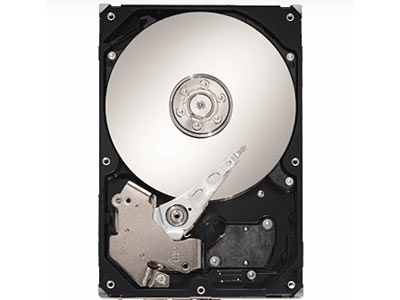Analysts Predict Acceleration in HDD Storage Density Growth
Market research firm IHS predicts a fast increase in HDD storage densities and, as a result, a similarly strong increase in storage capacities.
The faster pace will be driven by a need to record massive amounts of audio and video data and require a new technology that can break through the density barrier of the current perpendicular magnetic recording (PMR) technology.
IHS believes that the average density of 744 Gb per square inch in 2011 will grow at an average of about 19 percent over the next few years and reach 1.8 Tb by 2016. 2012 will see a density of 780 Gb per square inch per platter, and then rise to 900 Gb per square inch next year, the market research firm forecasts.
The trend calls for a technology that will allow an increase of the number of bits that can be safely stored on a platter without interfering with each other. The density improvements of storage densities have been nothing short of amazing over the past 15 years. In 1997, Seagate acquired Quinta, a developer of heat-assisted magnetic recording technology that was believed to drive the then believed physical limited of about 100 Gb per square inch to about 250 Gb per square inch using its OAW (Optically Assisted Winchester) technology.
Manufacturing improvements and especially the transition from longitudinal recording to PMR delayed the introduction of the rather expensive production of heat-assisted magnetic recording drives and gave the industry an opportunity to approach 1 Tb per square inch. OAW, however, has been in development as HAMR (heat-assisted magnetic recording) technology at Seagate and has already reached 1 Tb per square inch in a lab environment. If IHS is correct, we can expect the arrival of this technology in commercial drives by 2014.
Get Tom's Hardware's best news and in-depth reviews, straight to your inbox.

Douglas Perry was a freelance writer for Tom's Hardware covering semiconductors, storage technology, quantum computing, and processor power delivery. He has authored several books and is currently an editor for The Oregonian/OregonLive.
-
igot1forya I still think they need to improve the mechanical actuator technology - virtually no innovation has advanced this field (at least that I have heard). Start by making the actuator fixed and instead of a small read/write sensor on a small head, replace it with a solid read/write strip along the diagonal surface of the drive, then increase the number of strips to boost IO performance even further. But alas, I'm just a dreamer and not a storage engineer.Reply -
TheBigTroll seagate should make a 10k rpm consumer drive like WD but this time, throw in a 16gb SSD cache. this would be killer!!Reply -
icrf igot1foryaI still think they need to improve the mechanical actuator technology - virtually no innovation has advanced this field (at least that I have heard). Start by making the actuator fixed and instead of a small read/write sensor on a small head, replace it with a solid read/write strip along the diagonal surface of the drive, then increase the number of strips to boost IO performance even further. But alas, I'm just a dreamer and not a storage engineer.The problem with a static strip of read/write heads is that the head is much much larger than the track it is reading. There's no way to make them dense enough to cover the platter, so they have to move. There may be benefit had in placing more than one head on a single actuator on the same side of one platter.Reply -
rohitbaran A few days back, some 'researcher' talks about the SSD's bleak future and now this. Do I smell a proxy campaign?Reply
